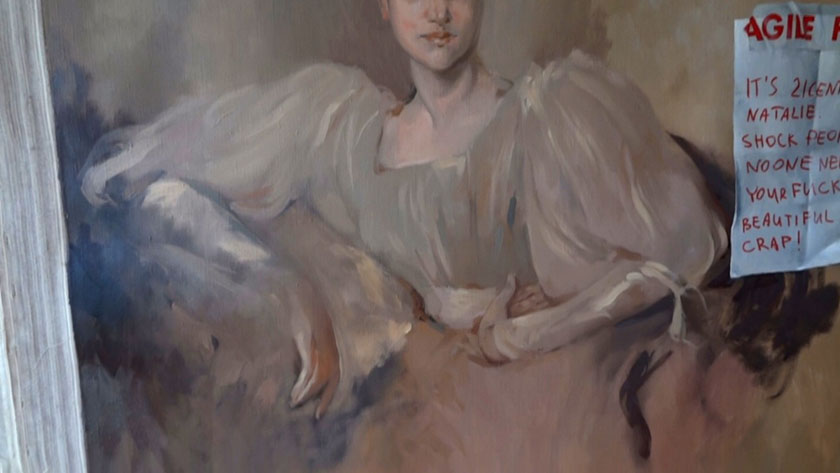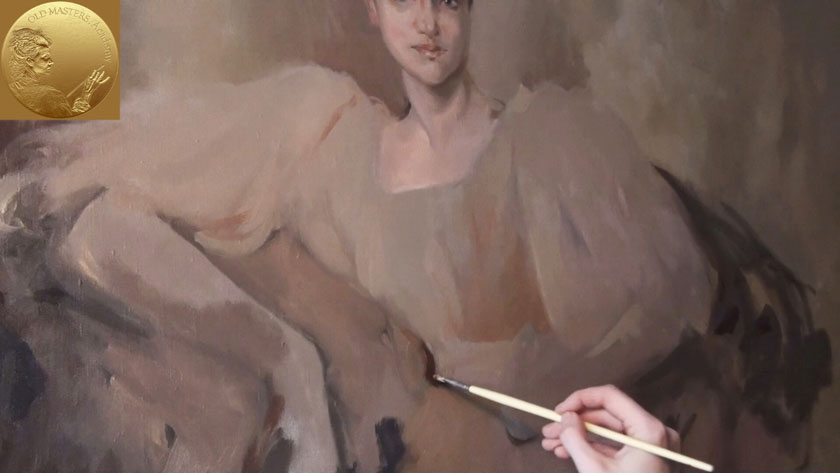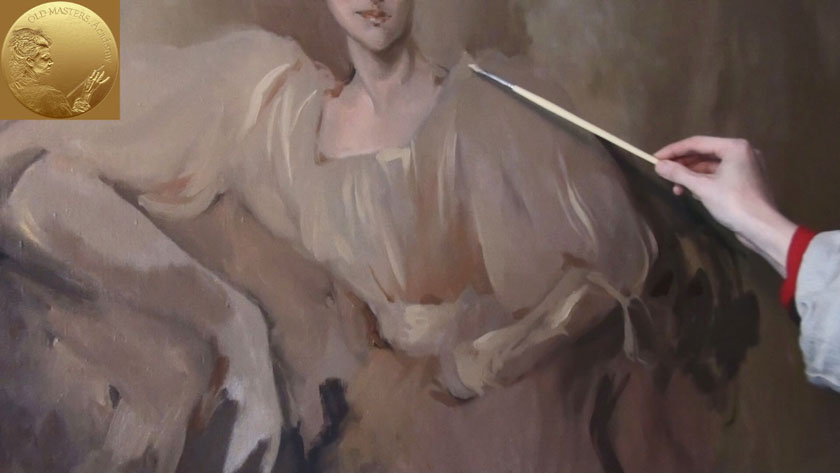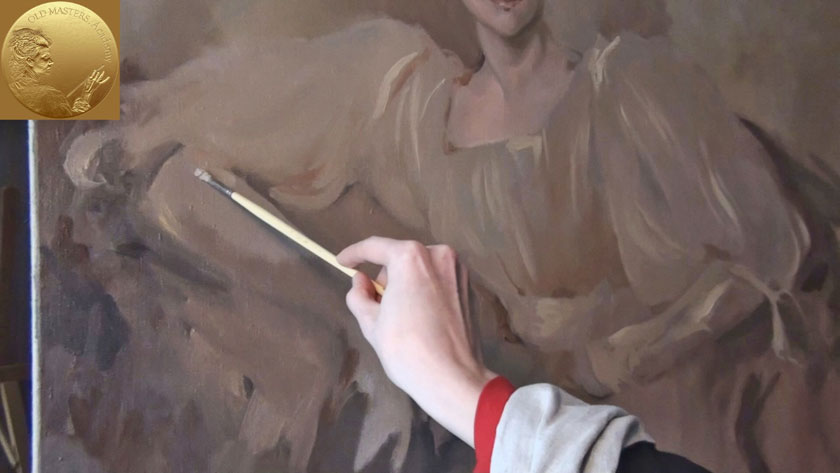Art Lesson 47, Part 4
Discover How to Paint a Portrait in the Direct Method
Learn how to paint like the Old Masters!
Old Masters Academy Online Course
Self-study, self-paced online video courseLifetime membershipOne-time payment: $487Enroll Now!Personal Tutoring online + Online Course
Unlimited tutoring by the Academy teachersLifetime membershipOne-time payment: $997Enroll Now!« Back to the Art Lessons List
Painting Clothes with Gestural Brushwork
In this part of the video we are coming back to the dress. This would be the third session of our painting process. The painting background and the mid-tone of the dress are already dry. Let’s use the following trick: overlay the already dry layer of the dress with the same (or almost the same) color. This will help us to imitate the wet-on-wet technique going forward. It will take less time to cover the dress the second time. You may use some medium such as Turpentine or Linseed Oil.

The right hand of the sitter is placed on the pile of cushions and drapery. Using a wide brush, we’re painting the pile of cushions in various colors. There’s no need to go into small details; we will keep it simple. The cushion outlines are diffused and the viewer would be only guessing about the exact shapes.

Various cushion colors can be mixed directly on the canvas. You shouldn’t worry about careful mixing and gradients. The main objective is to keep the style expressive. Therefore, this part of the painting will remain fresh and will almost look unfinished. That’s our primary intention: to make the sitter’s face detailed and keep the rest of the painting less detailed and more simplified.

We are carrying on with the dress. The second layer of the dress is now useful for continuing our wet-on-wet painting. We are aiming to finish the dress today while the paint is wet. Now we are adding more warm colors while keeping the same tone. Wide brushes are perfectly suitable for this task. Large surfaces of the dress can be painted freehand. We can make some adjustments to the shape of the dress and the cloth folds, depicting its volume as we go along.

After the dress is painted as a big mass without small details, we are ready to complete the dress with loose brushstrokes. In the first stage of painting the dress, the aim was to cover the whole mass of the dress with color. Now we are concentrating with close attention, considering every brushstroke. Brushstrokes should be made with character and precision. When you do such brushstrokes, make them with confidence. There’s no reason to follow details of the dress precisely; the artistic manner is more important in this case.
You should pay special attention to the highlights. They are quite essential for this method of painting. Try to avoid the temptation to paint a highlight with white paint straight from the tube. This is a typical mistake of beginning artists. Think about the color of the object before mixing the paint for the lightest places. Highlights almost always have their own colors. Try to see them in color. For example, the flesh-colored face, the cream dress, and the pinkish skirt will all have different highlight colors.




